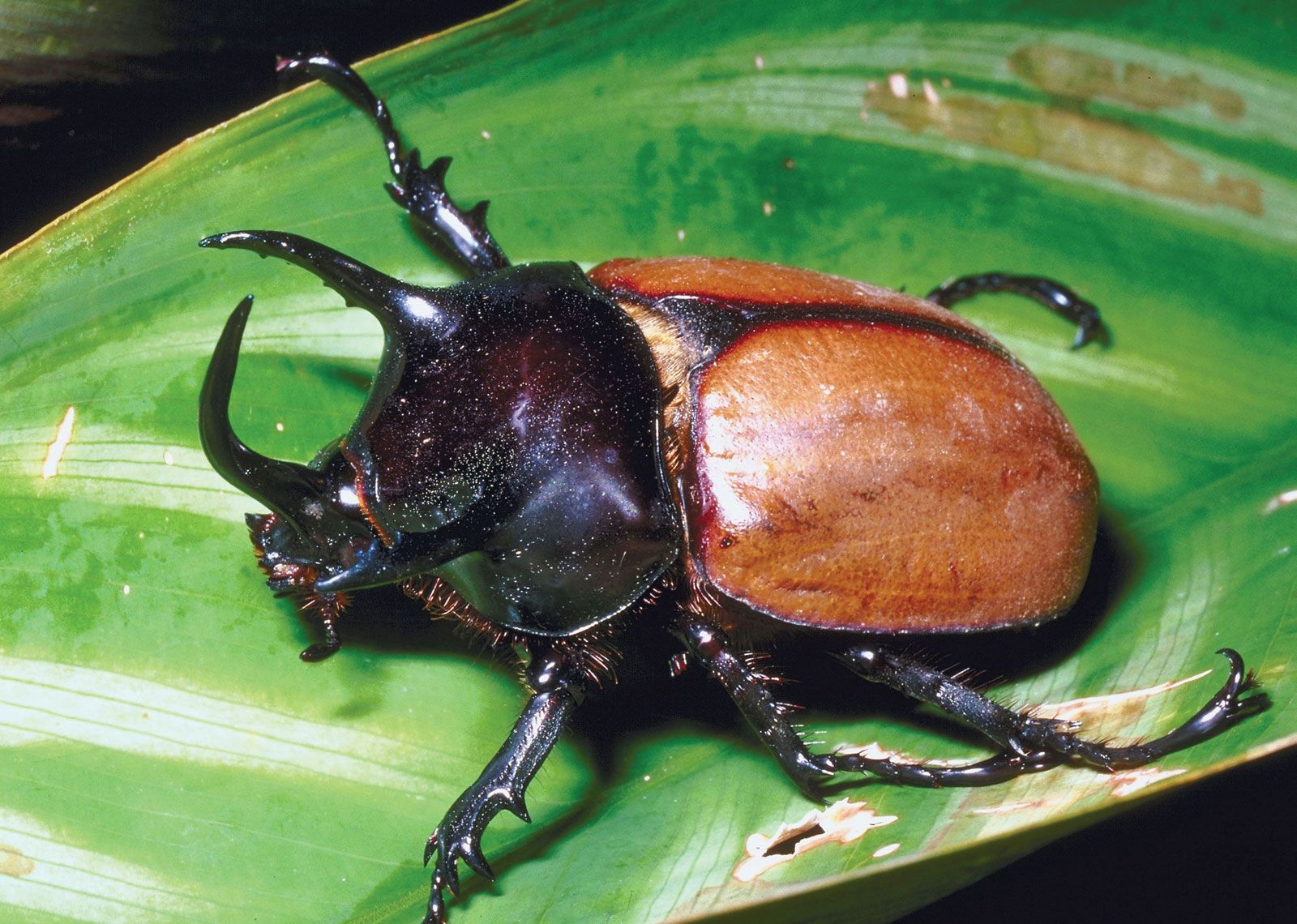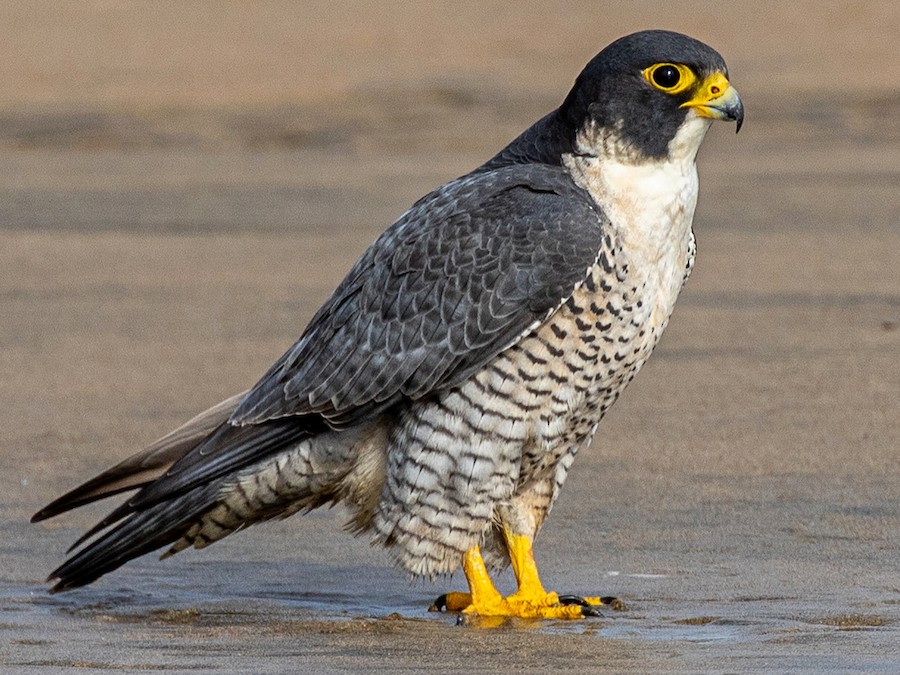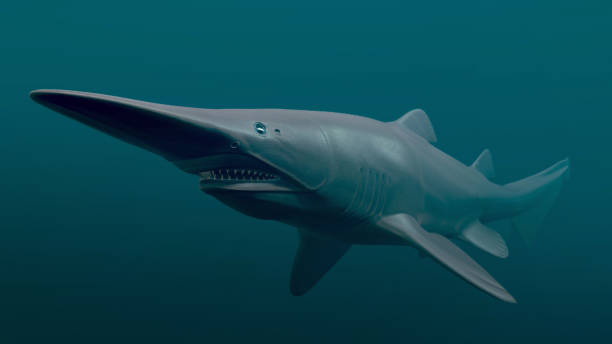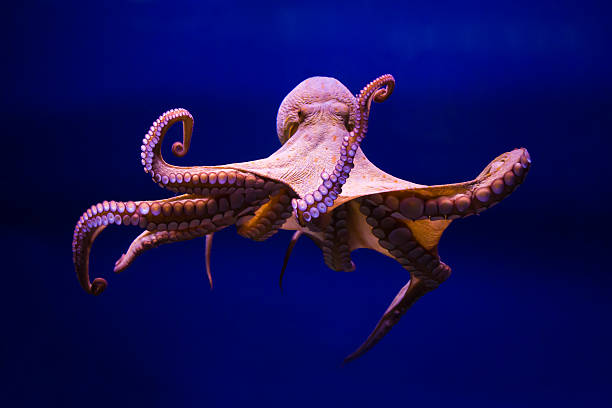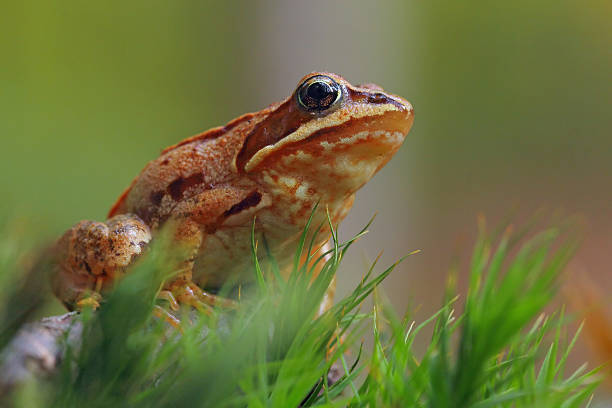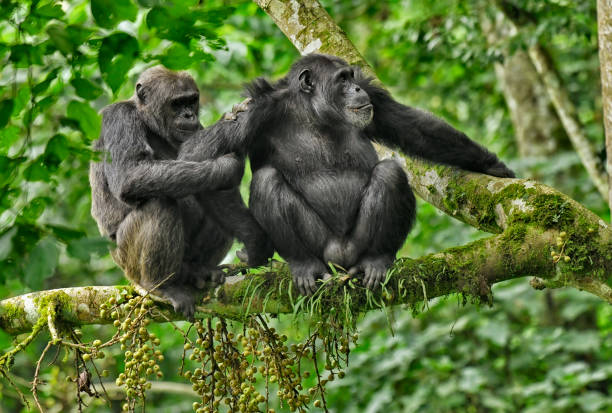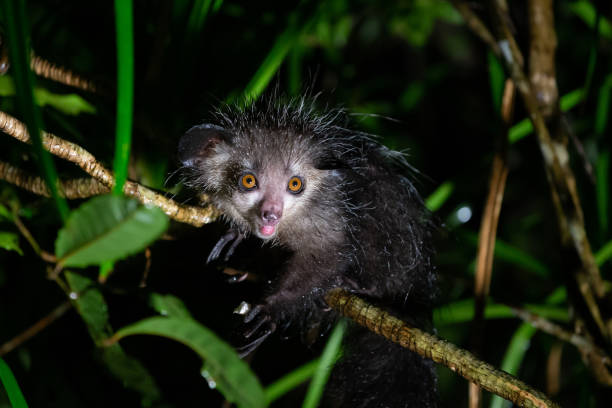Strength often evokes images of lions roaring across savannas or elephants uprooting trees, but the true titans of strength may be far smaller and closer than we realize. Beneath fallen leaves, within soil, and along tree trunks, there exist creatures so powerful, so astonishingly resilient, that they redefine what strength truly means.
Insects—tiny, often unnoticed, and underestimated—are nature’s miniature marvels of engineering. They are built for survival, not by muscle mass, but by efficiency, structure, and evolution. In fact, many insects can lift, pull, or carry weights hundreds of times greater than their own body mass.
If humans possessed the proportional strength of some of these six-legged warriors, we could lift cars, leap over buildings, and shatter stone with a single punch. These are the strongest insects on Earth—champions of survival, masters of adaptation, and proof that true power isn’t measured in size, but in spirit and design.
1. Rhinoceros Beetle – The Titan of the Tropics
When it comes to raw, brute strength, no insect commands more awe than the Rhinoceros Beetle. Named for the horn-like protrusion on its head, this beetle can lift objects up to 850 times its own body weight—a feat equivalent to a human lifting 65 tons.
Native to tropical forests across Asia, Africa, and the Americas, Rhinoceros Beetles are the embodiment of insect power. Their muscular bodies are encased in a glossy, armor-like exoskeleton, making them nearly invincible to most predators. The males use their horns to battle for territory and mates, locking in combat like miniature armored knights.
But strength in Rhinoceros Beetles isn’t just about fighting—it’s survival. Their horns are multipurpose tools used for digging, flipping logs, and defending themselves from attackers. The inner mechanics of their bodies reveal a symphony of natural engineering: powerful leg muscles, rigid leverage points, and an optimized exoskeleton designed to distribute stress evenly.
If one could scale a Rhinoceros Beetle to human size, it would be among the strongest land animals on Earth. Its strength is quiet, ancient, and unwavering—a symbol of evolution’s perfection.
2. Dung Beetle – The Relentless Champion
When scientists crowned the Onthophagus taurus, a species of dung beetle, the world’s strongest insect, it wasn’t just because it lifts—it endures. This beetle can pull 1,141 times its own body weight, which is like a human dragging six double-decker buses.
Dung beetles are nature’s recyclers. They collect, roll, and bury animal dung to feed their offspring and enrich soil. But within this seemingly unglamorous lifestyle lies an incredible display of endurance and purpose.
Male dung beetles engage in fierce duels, locking horns in battles that test their strength and stamina. The strongest males earn the right to guard tunnels and protect mates.
Their incredible power comes from specialized leg muscles and a compact, robust body structure that maximizes torque. More than just strong, dung beetles are determined—rolling their precious cargo tirelessly across terrain that would exhaust any other creature.
They remind us that true strength often serves a purpose beyond glory. For the dung beetle, power is devotion—to family, to duty, to life itself.
3. Leafcutter Ant – The Tireless Farmer
In the rainforests of Central and South America, a vast civilization thrives beneath the soil: colonies of leafcutter ants that can number in the millions. To the untrained eye, they are small and harmless. But these ants are some of the strongest creatures on the planet, able to carry objects up to 50 times their own body weight while walking inverted along vines and branches.
Leafcutter ants don’t eat the leaves they carry. Instead, they use them to cultivate fungal gardens underground—their food source. Each ant in the colony has a specialized role, from cutters and carriers to soldiers and farmers.
Their strength lies in collective power as much as individual might. Together, they can strip a tree of leaves in hours, transporting thousands of pieces back to their subterranean metropolis.
Biomechanical studies show that leafcutter ants’ neck joints are among the strongest ever measured, capable of withstanding forces that would crush most animals. They also possess an advanced communication system through pheromones and touch, coordinating their massive agricultural operations with perfect efficiency.
Leafcutter ants teach us that strength is amplified by unity—that even the smallest hands, when working together, can shape the world.
4. Hercules Beetle – The Living Myth
Named after the legendary Greek hero, the Hercules Beetle more than earns its title. This South American giant is one of the largest beetles on Earth, with males reaching up to seven inches long. They can lift 850 times their body weight, rivaling the Rhinoceros Beetle in power.
The Hercules Beetle’s horned body is designed for combat and endurance. Males fight epic duels by grappling with their horns, lifting and throwing rivals to claim territory or mates. These clashes resemble sumo bouts in miniature, with astonishing displays of leverage and strength.
What’s truly fascinating is the Hercules Beetle’s changing color. Its shell shifts from olive green to black depending on humidity, a natural camouflage that helps it blend with its environment. This adaptability, combined with its raw power, makes it one of evolution’s most awe-inspiring creations.
In mythology, Hercules was known for performing impossible feats. In nature, his namesake continues that legacy—quietly, persistently, and magnificently.
5. Asian Weaver Ant – The Architect of Strength
If there were an award for teamwork and ingenuity, the Asian Weaver Ant would win it hands down—or rather, legs and mandibles down. These fiery red ants are found across Southeast Asia and are famous for building elaborate nests out of leaves—held together by silk produced by their larvae.
To accomplish this, groups of workers pull and weave leaves together, each ant capable of carrying objects up to 100 times its body weight. Watching a colony of weaver ants at work is like observing an orchestra of strength and coordination.
They anchor themselves to surfaces, form living bridges, and stretch leaves into place—all while balancing and communicating through antennae signals. Their grip strength is extraordinary, allowing them to hang upside down while supporting massive loads.
Even in defense, they are fierce. Weaver ants form swarms that can overpower prey many times their size. Their strength is both physical and social—a reflection of how cooperation multiplies power beyond imagination.
6. Horned Dung Beetle – The Earth’s Powerlifter
Closely related to the Onthophagus species, the Horned Dung Beetle is another champion of raw strength. Its compact, muscular form allows it to move weights hundreds of times heavier than itself, often over long distances.
This beetle’s horn serves not only as a weapon but as a lever, enhancing its pulling and lifting power. Males often use their horns to wrestle rivals, pushing and flipping them in contests that determine access to mates.
What sets the Horned Dung Beetle apart is endurance. It doesn’t give up, even when the task seems impossible. Watching one struggle to move a giant ball of dung across rough terrain is like witnessing the embodiment of persistence.
Its strength is the kind that refuses defeat—the power to push forward no matter the odds.
7. Giant Horned Beetle – The Titan of the Forest Floor
Towering among the insect world, the Giant Horned Beetle, a close relative of the Hercules and Rhinoceros beetles, is a muscular masterpiece. Found in the rainforests of Central and South America, it’s capable of feats that border on the unbelievable—lifting objects hundreds of times heavier than its own body.
Its namesake horns, which can be as long as its body, are used to grapple with opponents in intense battles for dominance. The beetle’s thick exoskeleton protects it from predators and provides a solid framework for muscle attachment, enabling astonishing power generation.
In the dark, humid forests, these beetles move logs, dig through soil, and climb massive trees in search of food and mates. Their strength isn’t just about force—it’s about control and precision. Every movement is calculated, efficient, and powerful.
In a world scaled to their size, the Giant Horned Beetle would rival a bulldozer for lifting capacity. They are living demonstrations of nature’s engineering brilliance.
8. Leaf Beetle – The Silent Lifter
Among the diverse family of leaf beetles lies a quiet strength that often goes unnoticed. Though smaller and less flamboyant than the Rhinoceros or Hercules beetles, many leaf beetles possess remarkable lifting ability.
Their strength-to-size ratio allows them to haul loads dozens of times heavier than themselves while navigating complex terrains of leaves and stems. Some species demonstrate surprising tenacity, holding onto leaves or stems while predators attempt to dislodge them—a grip comparable to a human clinging to a cliff edge through sheer willpower.
Their muscles, though microscopic, are arranged in an intricate lattice that maximizes mechanical advantage. Combined with their low body weight, this allows them to apply tremendous force relative to their size.
While they may not win contests of fame, leaf beetles remind us that strength doesn’t need to be seen to be extraordinary. Sometimes, it thrives in quiet persistence.
9. Stag Beetle – The Warrior of the Woods
Few insects look as fearsome as the Stag Beetle. With massive, antler-like mandibles and a glossy black or brown armor, it’s a sight to behold in European woodlands. These mandibles aren’t just for show—they’re weapons of immense strength.
Male stag beetles use their jaws to wrestle rivals, lifting and flipping opponents with astonishing power. Despite their intimidating appearance, they are gentle toward humans and spend much of their lives underground as larvae, feeding on decaying wood and growing stronger each day.
When they finally emerge as adults, their brief, spectacular lives are defined by battles and displays of dominance. Their jaws can exert significant force, enough to lift or carry objects many times their weight.
Their strength lies not only in muscle but in structure—the mandibles act as levers, amplifying the force generated by their compact bodies.
The Stag Beetle’s strength is a celebration of nature’s elegance: power refined through purpose.
10. Bulldog Ant – The Savage Gladiator
Native to Australia, the Bulldog Ant is both feared and revered for its ferocity and physical power. Measuring up to 1.5 inches long, it’s one of the largest and most aggressive ants in the world. But what makes it truly remarkable is its combination of strength, agility, and venom.
A Bulldog Ant can carry objects up to 50 times its own weight and leap distances many times its body length. Its jaws are like steel traps, capable of slicing through prey and delivering a potent sting that can incapacitate animals much larger than itself.
Unlike most ants, Bulldog Ants rely on sight and individual hunting rather than pheromone trails, showcasing both intelligence and autonomy. Their muscular build allows them to overpower prey, defend territory, and perform acrobatic feats of agility that border on superhuman.
They are warriors in every sense—strong, fearless, and fiercely loyal to their colony.
The Science of Insect Strength
So what gives insects their super strength? The answer lies in scaling laws—a fundamental principle of biology and physics. As animals get smaller, their strength relative to body weight increases dramatically.
Insects have small bodies and exoskeletons made of chitin, an incredibly tough and lightweight material. Their internal muscles attach directly to the inner surface of the exoskeleton, providing maximum leverage. Combined with low body mass, this makes them capable of lifting objects far heavier than themselves.
Furthermore, insects operate with hydraulic-like precision. Their bodies use internal pressure and mechanical advantage rather than bulky muscle fibers, making every movement efficient and powerful.
Their energy systems are also optimized—highly oxygenated and capable of explosive bursts of force. This means they can perform tremendous feats of strength for short periods without tiring easily.
The Philosophy of Strength
When we look at these insects, it’s easy to marvel at their power, but beneath that awe lies a deeper message. Strength, in nature, is not always about domination—it’s about survival, resilience, and purpose.
A dung beetle rolling its prize across the desert teaches persistence. An ant carrying its leaf speaks of cooperation. A beetle lifting its rival tells a story of courage and instinct.
In their world, every ounce of strength serves a function. Every act of endurance has meaning. And every tiny creature carries within it the blueprint of greatness.
The Silent Superheroes Among Us
We often overlook insects, brushing them aside without realizing that they are the unseen champions of the natural world. They aerate our soil, pollinate our crops, recycle waste, and maintain the delicate balance of ecosystems.
Their strength sustains the planet in ways far more profound than any human invention. They remind us that might can exist in silence, that power can hide in simplicity, and that even the smallest life can hold the greatest lessons.
The next time you see an ant hauling a crumb, a beetle rolling its treasure, or a wasp building its nest, pause and look closer. Within those tiny bodies lies a force older than time—an unyielding spirit that has carried life forward for millions of years.
Strength is not the roar of lions or the crash of waves—it is the quiet persistence of an insect, working tirelessly beneath our feet, unseen but unbroken.
